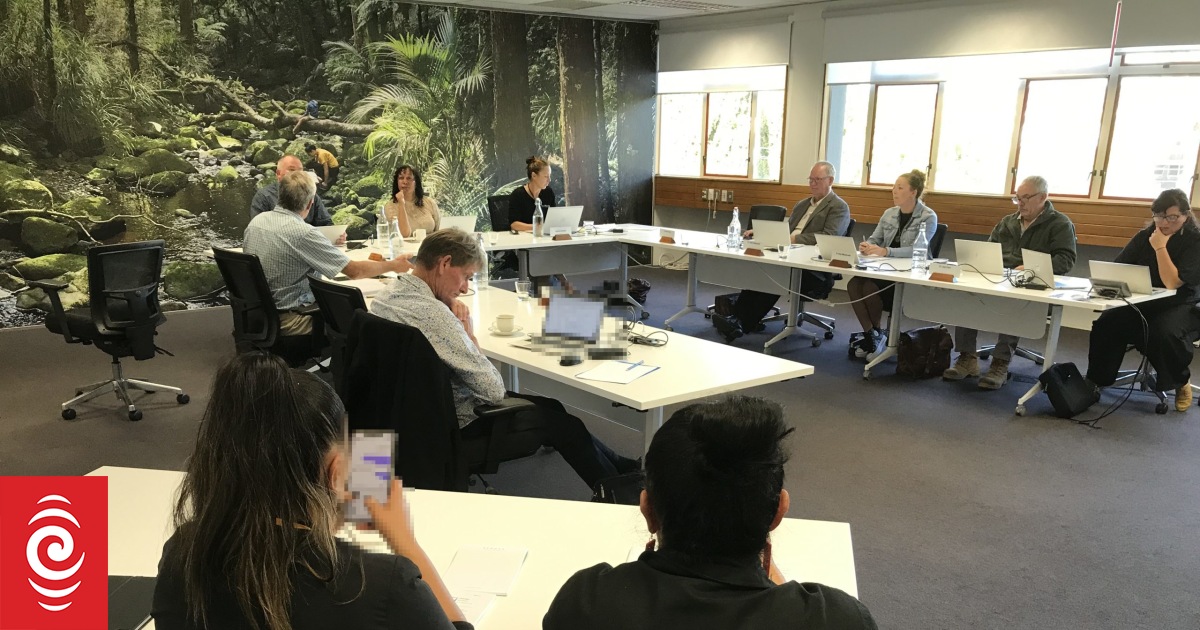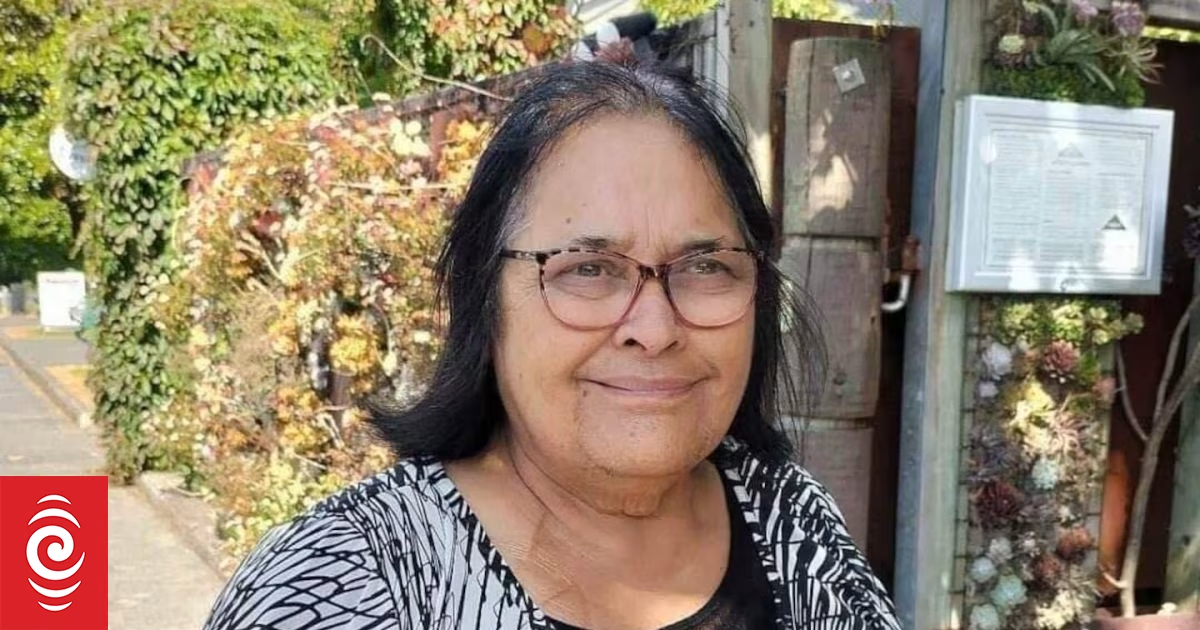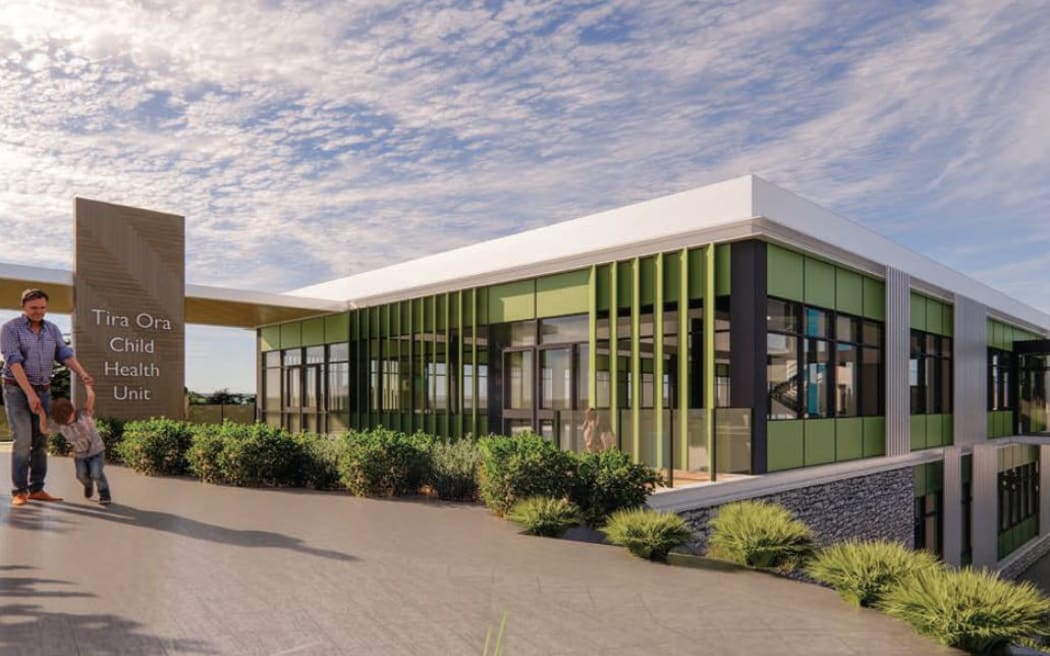
The child-health unit will include a whānau house and emergency accommodation for families to stay with children.
Photo: Supplied / Te Whatu Ora
The nearly $1 billion price tag and detailed plans for a Whangārei hospital redevelopment announced today brought relief to Northland health leadership.
The government has upped funding from a ringfenced total of $572 million to $759m for Stage 1 alone, approved by Cabinet this week.
It said Stage 2 would likely cost another $200m but that money would be finalised closer to the time.
The news was met with applause and waiata at a gathering onsite today.
The hospital has had a [https://www.rnz.co.nz/news/in-depth/454808/whangarei-hospital-leaky-roofs-dodgy-lifts-waiting-lists-and-covid-19-s-here
litany of problems], including raw sewage leaking down the inside of walls last year.
The redevelopment plans include an acute services building with a new emergency department with three times more space, a coronary care unit, and 10 operating theatres in Stage 1, as well as modernised intensive care facilities.
The child-health unit will include a whānau house and emergency accommodation for families to stay with children.
Then a new 158-bed tower is planned in Stage 2, with four medical and surgical wards and an acute assessment unit.
Te Whatu Ora’s National Public Health Service director Dr Nick Chamberlain, formerly the Northland DHB chief executive, said he was “thrilled” and “elated” by the funding today.
“I think the case for it is inarguable.”
The hospital buildings had reached “retirement age” and this showed in the difficult working conditions for staff and cramped, rundown wards patients used, he said.
“Health and safety concerns for staff and our patients, the cost of ongoing maintenance and the inability to provide infection control and modern efficient care mean that a new hospital is the only solution.”
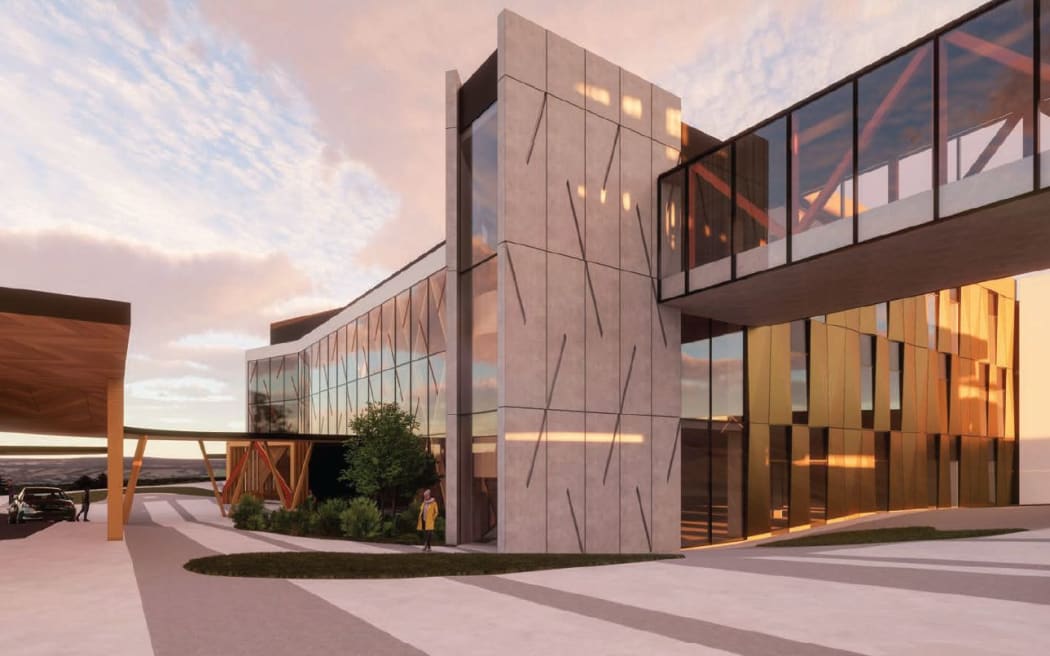
Whangārei Hospital services more than 190,000 people.
Photo: Supplied / Te Whatu Ora
The plans and funding had been ten years in the making – the first business case was submitted in 2015, Chamberlain said.
“Since then, we’ve had ups and downs, refusals and approvals, program, indicative and detailed business cases. However, at no stage, did anyone give up or say ‘this is too hard’.”
Te Tai Tokerau’s communities “with the highest population growth and the highest health needs in Aotearoa New Zealand deserve better”, Chamberlain said.
He and other health leaders described the plans as the biggest construction project in Northland in decades.
It was expected to employ 500 people, including carpenters, electricians and plumbers.
Whangārei Hospital services more than 190,000 people. Te Tai Tokerau’s population is expected to reach 210,000 by 2030.
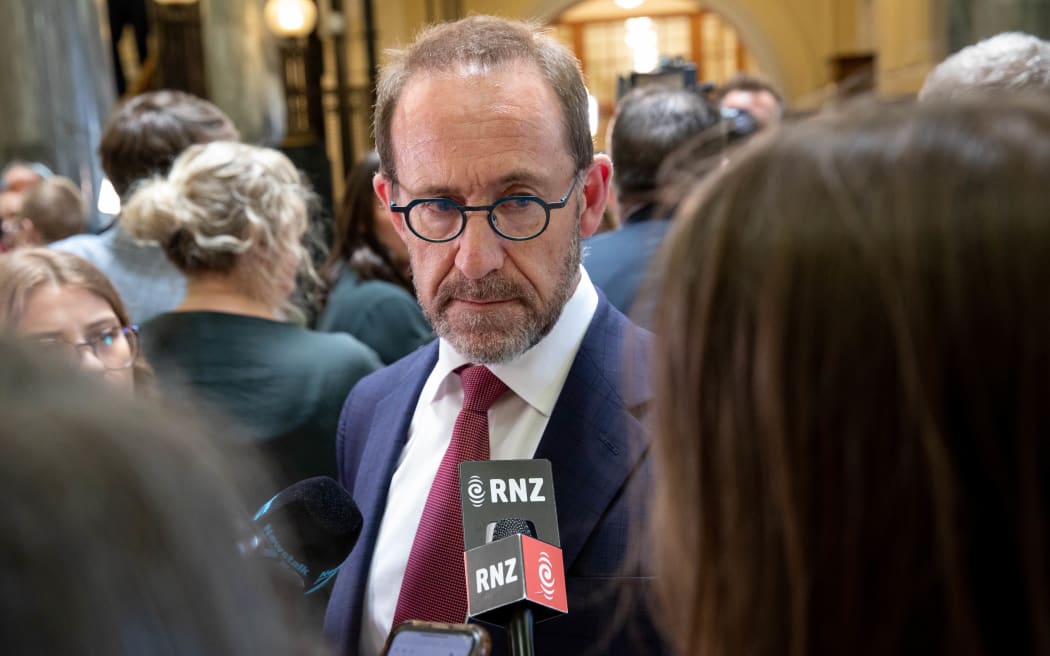
Photo: RNZ / Angus Dreaver
Minister of Health Andrew Little said he had been shown the poor condition of the hospital, by locals and staff, in a previous visit.
“They took me to things at a hospital that I don’t think I’ve seen in any hospital before. And when I’m talking about that, I mean, the condition of the hospital.
“And I had got advice from others within the health bureaucracy who had been here, who had said to me that ‘when we think about the next big hospital investment, the next big hospital development, it was Whangārei that was crying out for attention’.”
He saw “corridors on ward blocks that were just in a very, very poor state”.
“I saw an ED that was struggling to cope with the demand that was on it.”
He acknowledged there was a lot of catching up to do.
“If we’re going to have a facility that is going to be fit for purpose for the next 30,40, 50 years, actually, we’ve got to make that investment.”
He also hoped the project would prevent patients having to drive to Auckland for specialist care, particularly Māori.
Although the government is facing heavy criticism for major spending driving inflation, he said the redevelopment was “a long-term project”.
“Inflation comes in cycles, but this is about purchasing, significant billing and a significant service base that goes with it.
“The money that’s going into this is purchasing goods and services to contribute to a long-term facility. I’m satisfied that that is the right thing to do at this time.”


